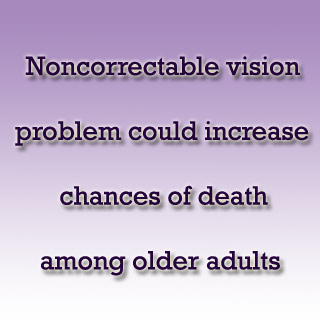
Visual impairment has apparently been linked to a higher threat of death plus issues that could result in increased death like accidental injury, depression, lesser body mass index (BMI), decreased walking speeds, augmented possibility of falls, self-reported problem in physical activity, cardiovascular disease, dementia and cancer. This was mentioned as background information by the authors.
The authors commented, “Correction for these ‘confounders’ has been found to attenuate the association between visual impairment and mortality, but the mechanisms behind the association between visual impairment and mortality remain to be determined.â€
Visual impairment in about 3,654 people was examined by Michael J. Karpa, M.B.B.S., B.Sc., of Westmead Millennium Institute, Sydney, Australia. They gathered data from the Blue Mountains Eye Study. The participants were supposedly 49 years and older. They were evaluated between 1992 and 1994 and after five and ten years, the experts assessed the association between visual impairment and death risk among older individuals.
At baseline, it was seen that contestants with noncorrectable visual impairment had more chances to be female, age 75 and older and underweight. Those with correctable visual impairment had more possibility to be age 75 and older, but apparently had no disparity in proportions of women or BMI.
Thirteen years post baseline, around 1,273 participants had expired. A higher possibility of dying was linked to noncorrectable visual impairment, with a powerful relationship for contestants who are younger than age 75. The examination apparently discovered greater effects of noncorrectable visual impairment on mortality risk, with both direct and indirect effects.
The authors mentioned, “Of mortality risk markers examined, only disability in walking demonstrated a significant indirect pathway for the link between visual impairment and mortality.â€
The authors remarked, “Disability in walking may represent an important indirect pathway to mortality for persons with visual impairment, and adjusting for this factor in statistical analysis may overadjust for the indirect effect of visual impairment on mortality risk. The impact of visual impairment on mortality may in fact be greater than that reported from previous studies that have used traditional statistical models.â€
The authors concluded by mentioning that the study reaffirms that visual impairment is associated with an increased risk of all-cause mortality.
The study was published in the October issue of Archives of Ophthalmology, one of the JAMA/Archives journals.
